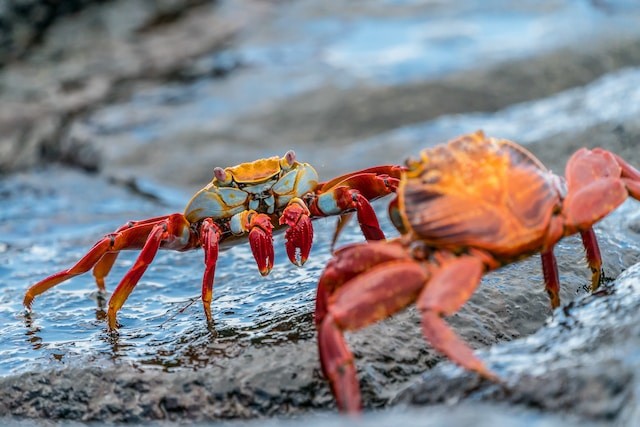Crabs are fascinating creatures that can be found in different habitats, from the ocean floor to the sandy beach.
They have a hard shell that protects them from predators and a pair of claws that they use for defense and feeding.
But one of the most curious features of crabs is the way they walk. Most crabs walk sideways, but some can walk forward or backward.
The shape of their body

The wide, flattened shape of crabs makes it simple for them to squeeze into tight spaces like cracks in the ground, but it also limits their ability to move their leg's shoulder joint, as per DiscoverWildlife.
The second joint of each leg of crabs allows them to move far more quickly than their actual forward shuffle. Similar to our knees, these joints only allow for sideways movement. This means that walking sideways is the most efficient way for crabs to move around.
This makes it easy for them to hide under the sand and move quickly on the shore. Some crabs can walk forward on their hind legs, but they are still walking in a straight line.
Crabs have different ways of walking depending on their shape, size, and habitat.
The joints of their legs
Crabs have stiff jointed legs, and walking sideways means one of their legs never crosses another leg while walking, as per Coastal Dream Life.
If crabs had to walk any other way, they might trip over their legs or get tangled up. When crabs walk, they use a pull-and-push motion.
They pull themselves forward with one set of legs and push themselves backward with another set. They can move swiftly and shift directions with ease as a result.
The adaptation to their environment
Crabs have evolved to suit their environment and lifestyle. Some crabs live on rocky shores and need to climb steep surfaces.
These crabs, such as the spider crabs, have long legs that can walk forward and grip the rocks with their sharp tips. Some crabs live on land and need to breathe air.
Some, such as the land crabs, have modified gills that allow them to survive out of water. Some crabs live on sandy beaches and need to escape predators.
Other crabs, such as the ghost crabs, have lightweight bodies and can run sideways at high speeds.
Facts about crabs
Crabs have a sense of smell that helps them find food and mates. They use their antennae to detect chemicals in the water or air.
They can communicate with each other by making sounds with their claws or mouthparts, or they also use body language, such as waving their claws or changing their color.
These creatures can regenerate lost limbs over time. They usually shed their old shell and grow new ones several times in their life. This process is called molting.
They are omnivorous and eat a variety of foods, such as algae, worms, mollusks, fish, other crabs, and even plants. Meanwhile, some species are scavengers and feed on dead animals or organic matter.
Crabs are preyed upon by many animals, such as fish, birds, octopuses, seals, otters, and humans. Some have adaptations to avoid predators, such as camouflage, armor, venom, or mimicry.
© 2025 NatureWorldNews.com All rights reserved. Do not reproduce without permission.





